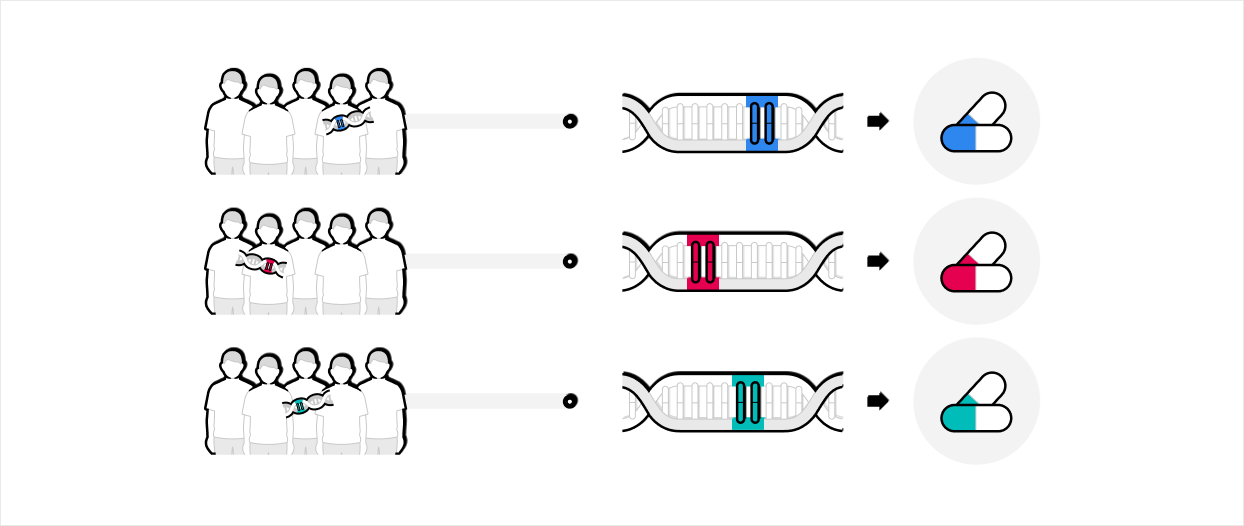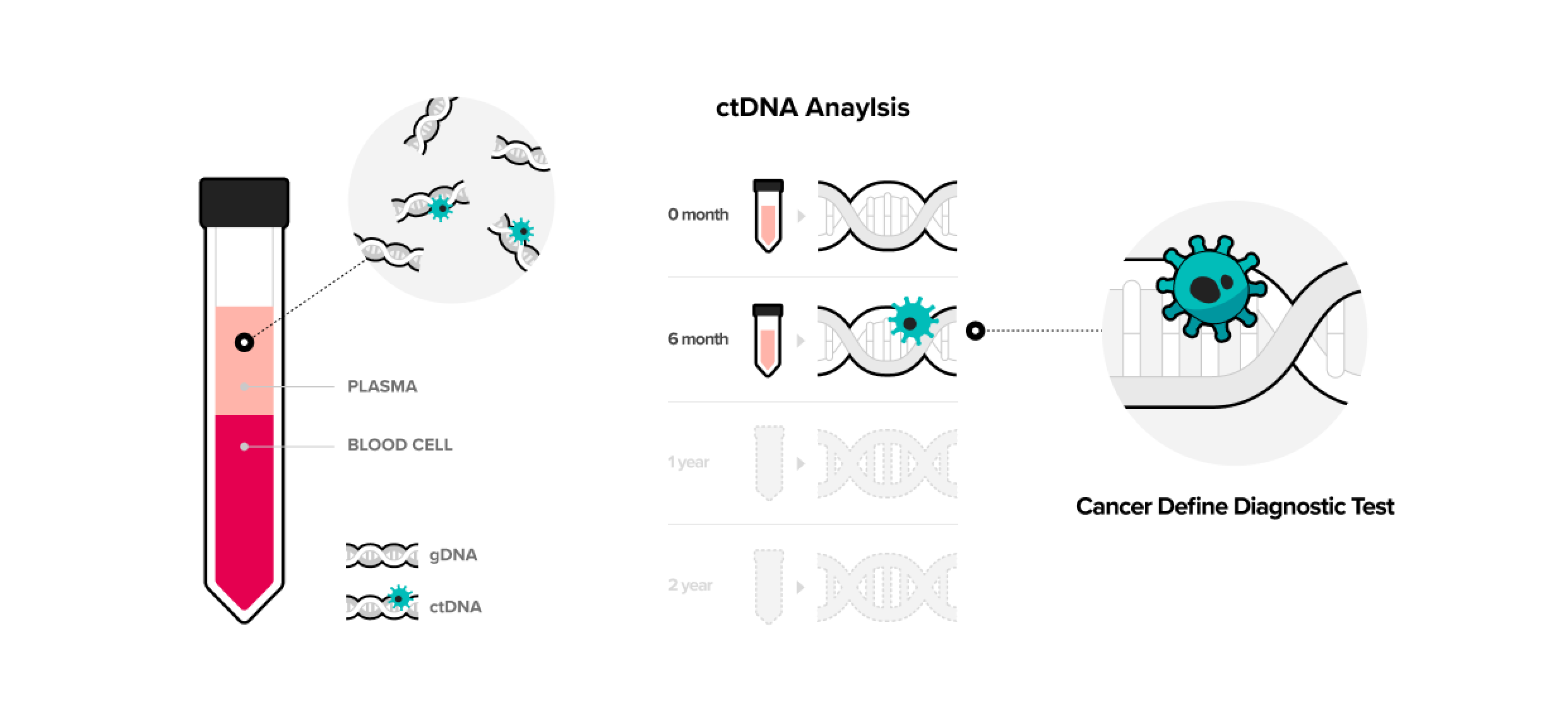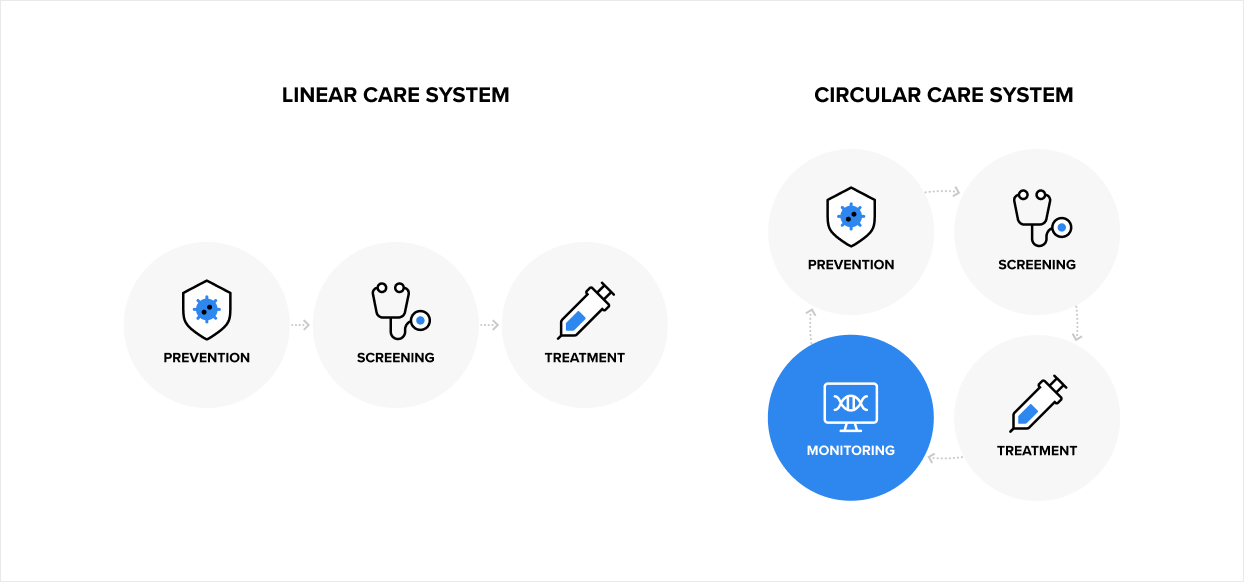Precision Medicine
As a global leader in precision medicine, Macrogen has established Big Data on genomes, medicine and lifestyle to better forecast disease risks, thereby contributing to future innovation in the field of healthcare.
In order to offer services related to the forecasting of disease risks, and the prevention, diagnosis and treatment of diseases, Macrogen carries out analyses based on proteomics, transcriptomics and multi-omics.
Precision Medicine
 Predictive
Predictive Preventive
Preventive Personalized
Personalized
Genome Information
- Diagnostics
- Diagnosis of genetic disorders
- Development of diagnostic
panel - Molecular diagnostic Kit & SML
- Therapy
- Targeted therapy
- Biomarker & drug discovery
- Monitoring
- Disease monitoring of
recurring disease - Customized healthcare based
on the genetic information
- Prediction/Prevention
- Disease prediction /
prevention through genetic
analysis - Genome big data construction
SERVICE
Cancer Risk Prediction
Cancers occur due to various causes, but some cancers are caused by genetic mutations of specific inherited genes.
People who have such cancer-related mutations are exposed to far more risk of cancer than others. Hereditary cancers are caused by gene abnormalities inherited from parents, and the incidence of cancer in the same family is high. Thus, early detection and identification of the exact cause through gene diagnosis is required. The most commonly known hereditary cancers are breast cancer, ovarian cancer, and colon cancer. In regard to incidence of breast cancer, 5% - 10% is known to be genetically caused, and about more than half are caused by abnormalities in genes called BRCA1 and BRCA2. In addition, having genes that cause various cancers will dramatically increase the incidence of cancer.

Analysis Of Causes Of Cancer
This service tracks the cause of cancer and provides key information for personalized treatment by analyzing mutations in the genesinvolved in cancer development using DNA extracted from cancer patients' tumor samples.
Until now, cancers were classified in a histopathological manner, but recently, gene analysis is performed on cancer tissue, and cancers are subdivided into groups. This contributes to improved response (about 75% of patients exhibit different effects when the same anticancer drug is prescribed) and provides personalized treatment for cancerpatients while minimizing adverse effects.


Cancer Occurrence Monitoring
When cancer occurs in the body, there are NDA fragments detached from cancer cells in the blood.
This is called ctDNA (circulating tumor DNA). When ctDNA is checked regularly, cancer cells can be detected early and prompt measures can be taken.
Unlike existing biopsies, this test can be performed by simply collecting blood, which makes regular checkups more efficient. However, theistest is not widely given because the levels ofctDNA are different by type of cancer and individual, making detection very difficult. Macrogen is expanding this service by continuously making technical improvements.

